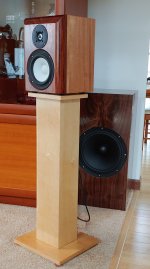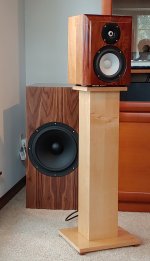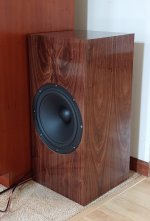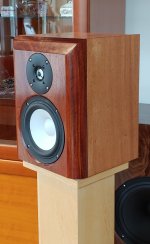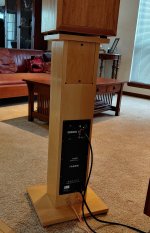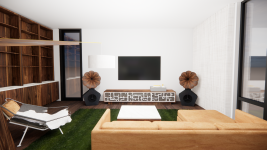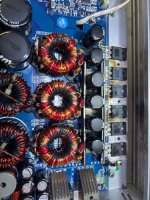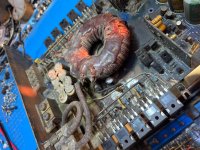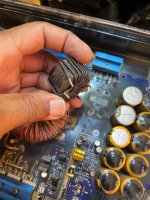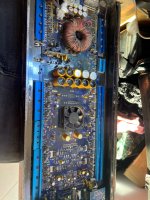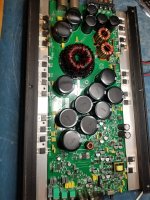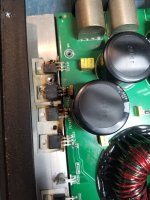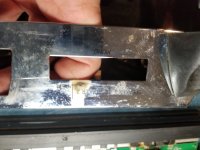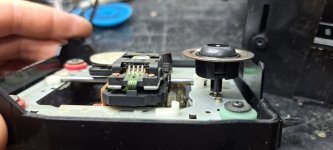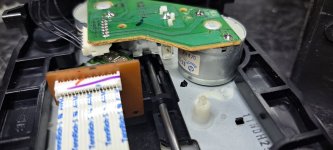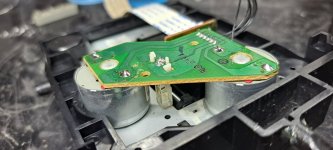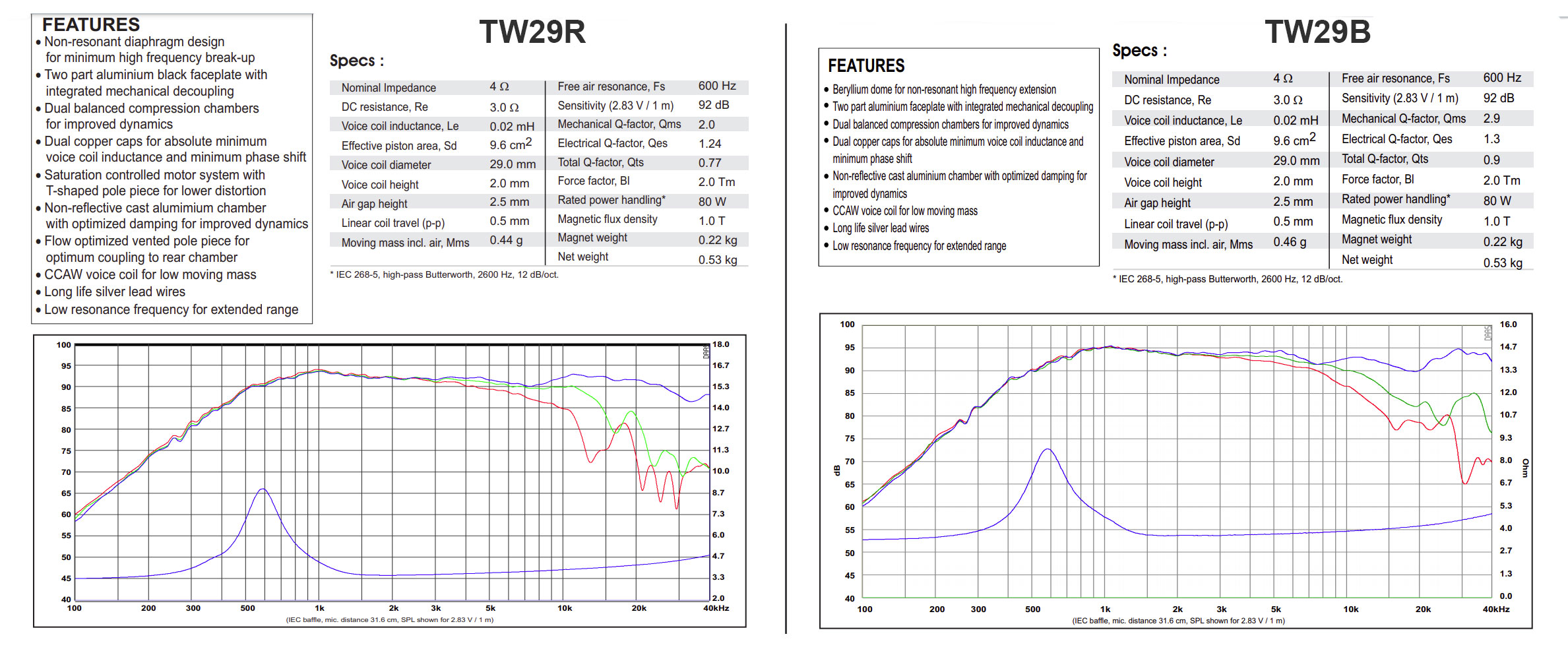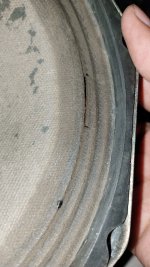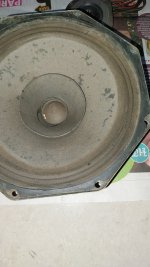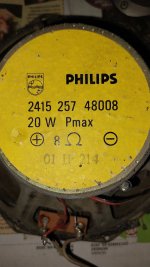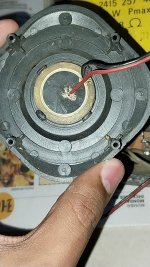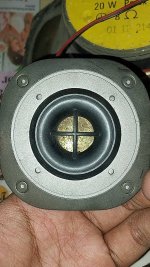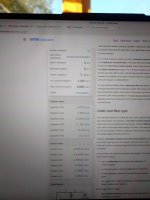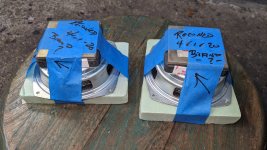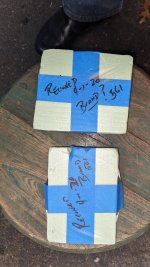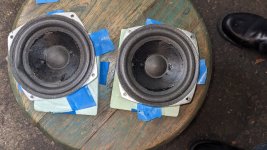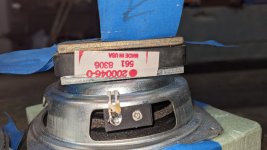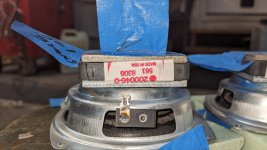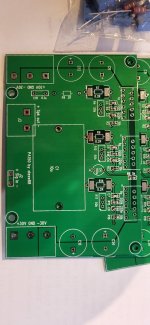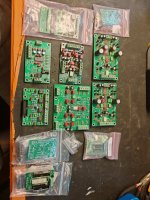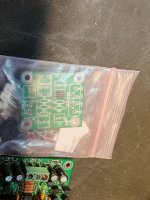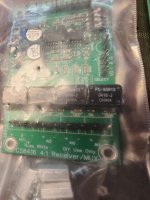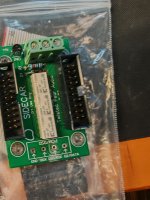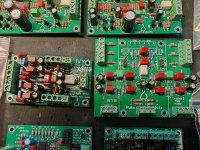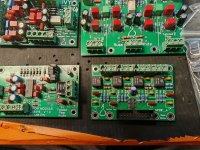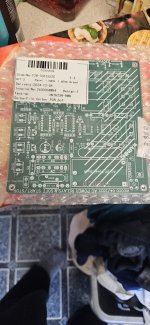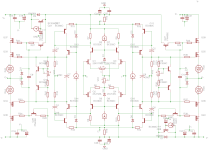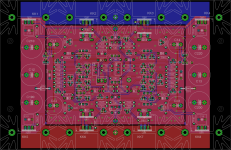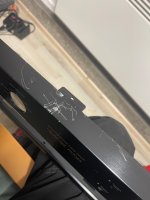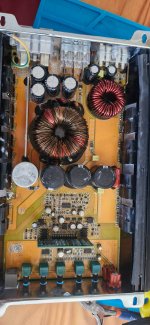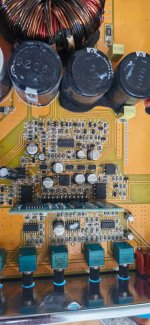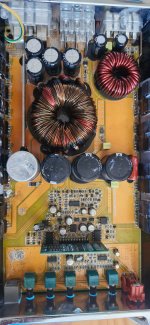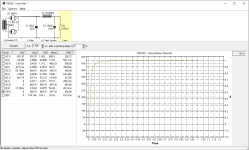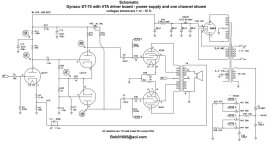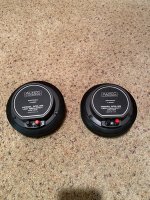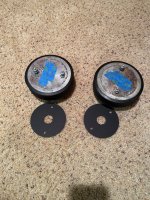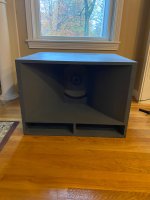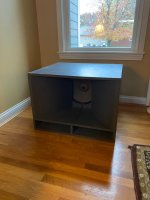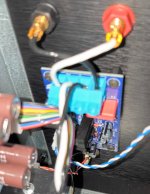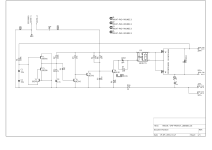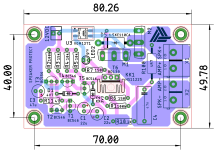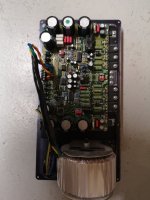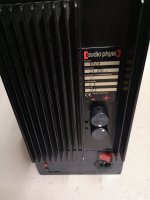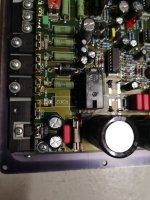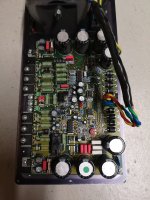Hello all -
I've been lurking here for a long time with some moderate contributions, and have been scouring the forums trying to understand a direction for a custom speaker I'm building around the B&C DCX464. Really, it's being designed around aesthetics - I have always loved the look of big wood horns ala Oswalds Mill Audio and A for Ara. I know the two aforementioned companies build luxury items for a price point that is out of reach for almost everyone, with a sound quality that can likely be achieved for much lower; however, I'm an architect and one of my fatal flaws is that I like how things look as much as how they perform.
The design for this speaker thus started with a visual idea more than an acoustical one - I wanted a big (24" +/-) round wood horn set atop a bass cabinet down below. In looking at several options, it appeared to me the best way to achieve this was to 1. keep the crossover point relatively low (to achieve more flexibility in driver-to-driver spacing) and try to play as much of the frequency range from the horn to keep it as point-source as possible. I saw the DCX464 reviewed relatively favorably on Joseph Crowe's site, and given its broad range and low crossover possibilities, I thought that driver might be the ticket.
I use a program called "Rhino" for work, almost 8 hours a day, and have been for nearly 15 years - so there is nothing outside my capability for modeling. I am also an expert in a parametric program called "grasshopper," so I've been able to translate some of the more complex math involved in various designs into parametric models that allow for extremely fast and quick experimentation (I have built a pretty comprehensive model that allows me to iterate through tractrix horn constructs with petals). I have a 3D printer and a CNC and have been building furniture for 25 years, so there are few things outside my fabrication abilities.
Where I quickly fall apart is trying to determine what exactly the geometry of the actual horn/waveguide should be. I have read a lot of different opinions, but realistically what I'm looking for is good sound that works on a relatively wide dispersion - it doesn't have to be the same EVERYWHERE, but I'd like to avoid a full-range pin-point sweet spot if at all possible.
I've been looking at a lot of other precedents for contemporary horn drivers, including the Oblate Spheroid waveguide, Joseph Crowes ES290 horn, the Advance Transition Horn EXAR, and tractrix horns in order to try to find some commonality between all of them in the design. I have drawn all these in CAD and plotted them for comparison.
I'm also curious about the "pleats" in the X-Shape waveguide (mostly because I could fabricate and think it looks cool) - but don't really understand what it is doing acoustically.
https://audiohorn.net/x-shape-horn/
Attached is the curve plot comparison, as well as a couple of early renderings of what I think the cabinet would generally look like. I was looking at the Faital Pro FR400 for the lower end. I'd be doing an active system with maybe a passive crossover for the compression driver. I'm looking for opinions - about horn design, general thoughts on the speaker design, etc. Thank you!
